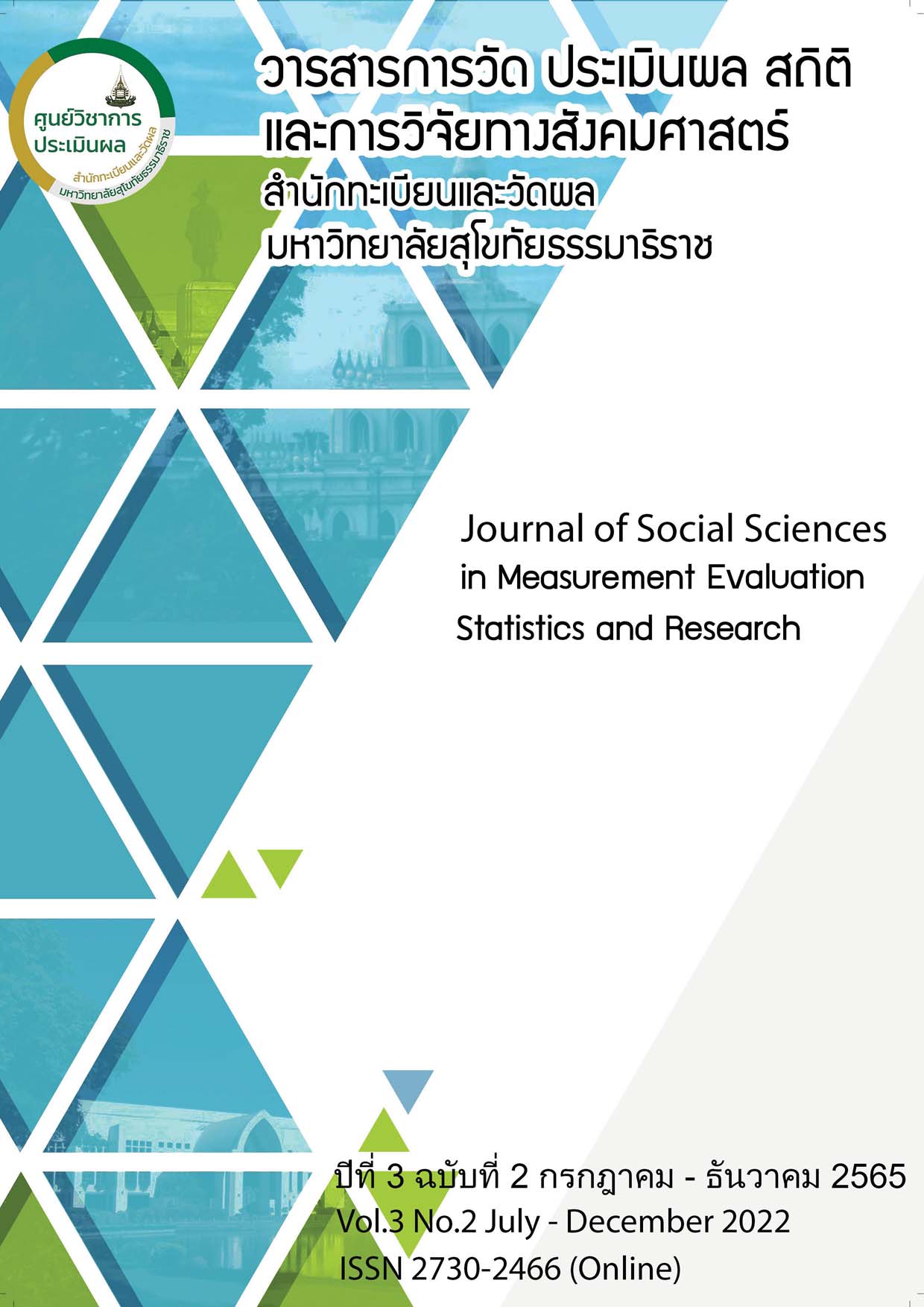การประยุกต์ใช้โปรแกรม R สำหรับการปรับเทียบคะแนนตามทฤษฎีการตอบข้อสอบ
Main Article Content
บทคัดย่อ
การปรับเทียบคะแนนเป็นเทคนิคทางสถิติที่ใช้บ่อยในโปรแกรมการทดสอบเมื่อการทดสอบมีแบบทดสอบหลายฉบับ (ฟอร์ม) ที่นำไปใช้กับกลุ่มผู้สอบต่างกันเนื่องจากการทดสอบหลายครั้งกับผู้เข้าสอบหลายกลุ่มอาจส่งผลให้ข้อสอบถูกเปิดเผยมากเกินไป จึงอาจส่งผลกระทบต่อความปลอดภัยของการทดสอบ การใช้แบบทดสอบหลายฉบับจะทำให้การเปิดเผยข้อสอบลดลง อย่างไรก็ตามการใช้แบบทดสอบหลายฉบับจะทำให้คะแนนที่ได้มีความแตกต่างกัน เนื่องจากเป็นประเมินด้วยเนื้อหาคล้าย ๆ กันและมีความยากแตกต่างกัน การเทียบเคียงคะแนนจากแบบทดสอบฉบับหนึ่งไปยังอีกฉบับหนึ่งจึงถูกนำมาใช้เพื่อให้เกิดความยุติธรรมในการทดสอบ ทฤษฎีการตอบข้อสอบถูกนำมาใช้เพื่อปรับเทียบคะแนนของแบบทดสอบ ในโปรแกรม R สามารถปรับเทียบคะแนนด้วยแพ็คเกจ equateIRT บทความนี้มีวัตถุประสงค์เพื่อนำเสนอ 1) แนวคิดพื้นฐานของการปรับเทียบคะแนน 2) การออกแบบวิธีการเก็บข้อมูลสำหรับการปรับเทียบคะแนน และ 3) การประยุกต์ใช้โปรแกรม R ในการปรับเทียบคะแนนแบบทดสอบ
Article Details

อนุญาตภายใต้เงื่อนไข Creative Commons Attribution-NonCommercial-NoDerivatives 4.0 International License.
ข้อความและบทความในวารสารการวัด ประเมินผล สถิติ และการวิจัยทางสังคมศาสตร์ เป็นแนวคิดของผู้เขียน มิใช่ความคิดเห็นของกองบรรณาธิการวารสาร จึงมิใช่ความรับผิดชอบของวารสารการวัด ประเมินผล สถิติ และการวิจัยทางสังคมศาสตร์ บทความในวารสารต้องไม่เคยตีพิมพ์ที่ใดมาก่อน และสงวนสิทธิ์ตามกฎหมายไทย การจะนำไปเผยแพร่ ต้องได้รับอนุญาตเป็นลายลักษณ์อักษรจากกองบรรณาธิการ
เอกสารอ้างอิง
Battauz, M. (2015). equateIRT: An R Package for IRT Test Equating. Journal of statistical software, 68(7), 1 - 22. https://doi.org/10.18637/jss.v068.i07
Dorans, N. J., & Holland, P. W. (2000). Population Invariance and the Equatability of Tests: Basic Theory and The Linear Case. Journal of Educational Measurement, 37(4), 281-306. https://doi.org/https://doi.org/10.1111/j.1745-3984.2000.tb01088.x
Dorans, N. J., & Puhan, G. (2017). Contributions to Score Linking Theory and Practice. In R. E. Bennett & M. von Davier (Eds.), Advancing Human Assessment: The Methodological, Psychological and Policy Contributions of ETS (pp. 79-132). Springer International Publishing. https://doi.org/10.1007/978-3-319-58689-2_4
Hambleton, R. K., & Swaminathan, H. (1985). Item Response Theory: Principles and Applications. Springer Netherlands. https://books.google.co.th/books?id=jKFMUFI-e1UC
Hambleton, R. K., & Swaminathan, H. (1985). Test Equating. In Item Response Theory: Principles and Applications (pp. 197-223). Springer Netherlands. https://doi.org/10.1007/978-94-017-1988-9_10
Kolen, M., & Brennan, R. (2014). Test equating, scaling, and linking. Methods and practices. 3rd revised ed. https://doi.org/10.1007/978-1-4939-0317-7
Kolen, M. J., & Brennan, R. L. (2004). Test Equating, Scaling, and Linking: Methods and Practices. Springer. https://books.google.co.th/books?id=tusOwjb7LWsC
Kolen, M. J., & Brennan, R. L. (2014). Introduction and Concepts. In Test Equating, Scaling, and Linking: Methods and Practices (pp. 1-27). Springer New York. https://doi.org/10.1007/978-1-4939-0317-7_1
Livingston, S. A., & Kim, S. (2010). Random-Groups Equating with Samples of 50 to 400 Test Takers. Journal of Educational Measurement, 47(2), 175-185. http://www.jstor.org/stable/20778946


